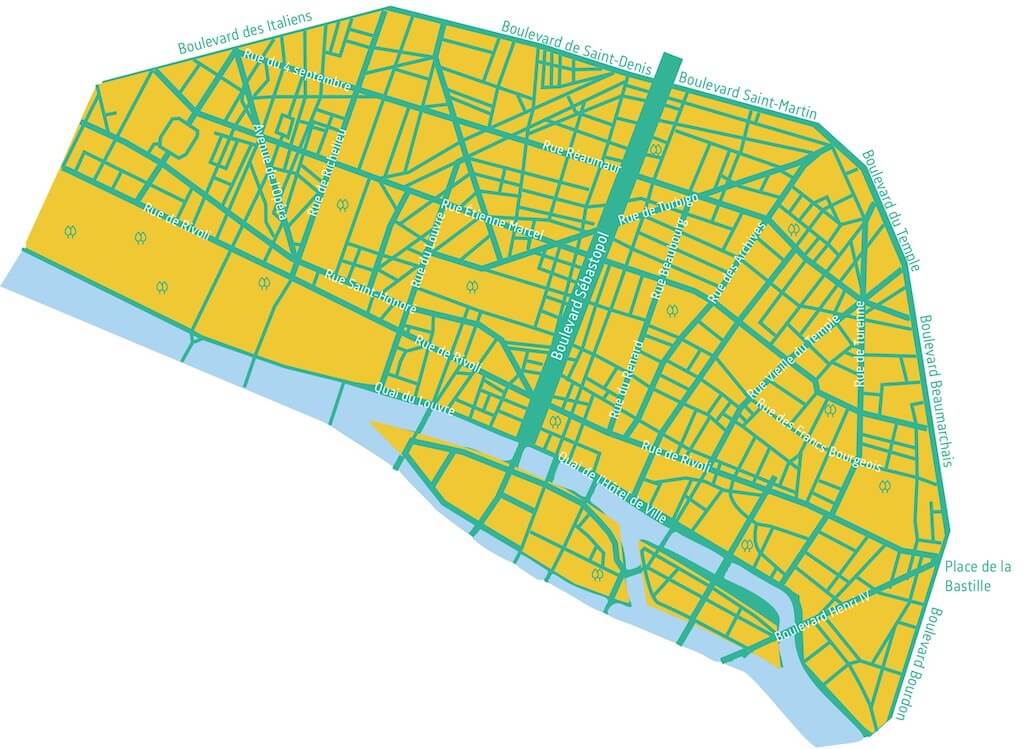Autumn Gear Guide
Find inspiration in our Gear Guide that will keep you out on your bike through wind or rain.
Download NowParis is welcoming the world for the Olympic Games in 2024 and visitors will witness a city that has radically changed is planning by putting people ahead of vehicles. What a shining example for all. And, Mayor Anne Hidalgo is nowhere near done. In the wake of the 2024 Olympic and Paralympic Games, Paris is […]
Paris is welcoming the world for the Olympic Games in 2024 and visitors will witness a city that has radically changed is planning by putting people ahead of vehicles. What a shining example for all. And, Mayor Anne Hidalgo is nowhere near done.
In the wake of the 2024 Olympic and Paralympic Games, Paris is set to implement a Limited Traffic Zone (ZTL) in the city center, aiming to promote public transport, encourage active mobility including bicycles, and reduce pollution and noise. Following the example of cities like Madrid, Milan, and Rome, the ZTL will restrict transit traffic—vehicles merely passing through without stopping—in the specified area.
The ZTL, designed in collaboration with the police headquarters, will cover the Paris Center sector, including the 1st, 2nd, 3rd, and 4th arrondissements. Discussions are ongoing with the State to potentially extend the zone to include islands and high quays on the right bank, pending the decision of the police headquarters.
Scheduled for implementation in the fall of 2024, the ZTL aims to reorganize public space, favoring pedestrians, cyclists, and users such as residents, traders, and visitors. This measure also aligns with efforts to combat air pollution and noise, contributing to a healthier and more sustainable urban environment.
According to a project summary on the city of Paris website, the objectives of the Limited Traffic Zone are as follows:

Map of Paris ZTL (city of Paris)
The ZTL will permit destination traffic, allowing residents, workers, delivery personnel, and various other categories of users to access the area. Transit traffic, which involves vehicles crossing the area without stopping, will be prohibited. Exceptions include priority vehicles, public transport, taxis, and vehicles displaying a “mobility inclusion” card or a parking card for disabled people.
The implementation of the ZTL is expected to lead to a significant reduction in traffic within the city center. The impact study indicates a decrease in traffic on major routes, such as Avenue de l’Opéra and Boulevard de Sébastopol, resulting in a corresponding reduction in noise levels and improved air quality.
Additionally, the study suggests a potential increase in commercial traffic within the ZTL, as observed in the Rivoli/Les Halles/Saint-Antoine sector. The decrease in traffic and subsequent improvements in the living environment are anticipated to enhance the appeal of commercial areas.
The process leading to the ZTL began in 2021 when Paris initiated a consultation on its establishment. The feedback from the consultation played a crucial role in shaping the plan for the Limited Traffic Zone, even though it is somewhat behind schedule at this point.
Other European cities are also reclaiming city centers from cars and giving them over to the people who live and work there.
As Paris prepares for the initiative, it aims to create a more sustainable and pedestrian-friendly city center, aligning with European practices and recommendations for reducing traffic and associated emissions. The Paris ZTL is poised to leave a lasting impact on the quality of life in the heart of Paris, fostering a greener and more vibrant urban landscape and hopefully be an active
Find inspiration in our Gear Guide that will keep you out on your bike through wind or rain.
Download Now
Leave a comment